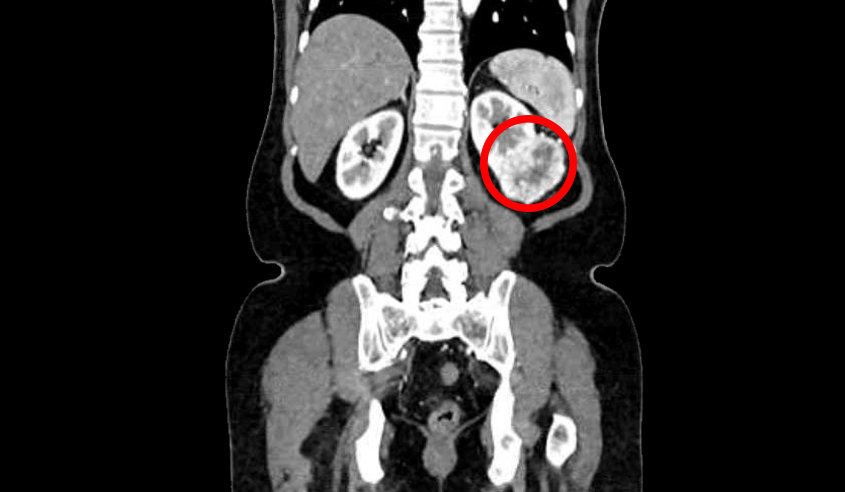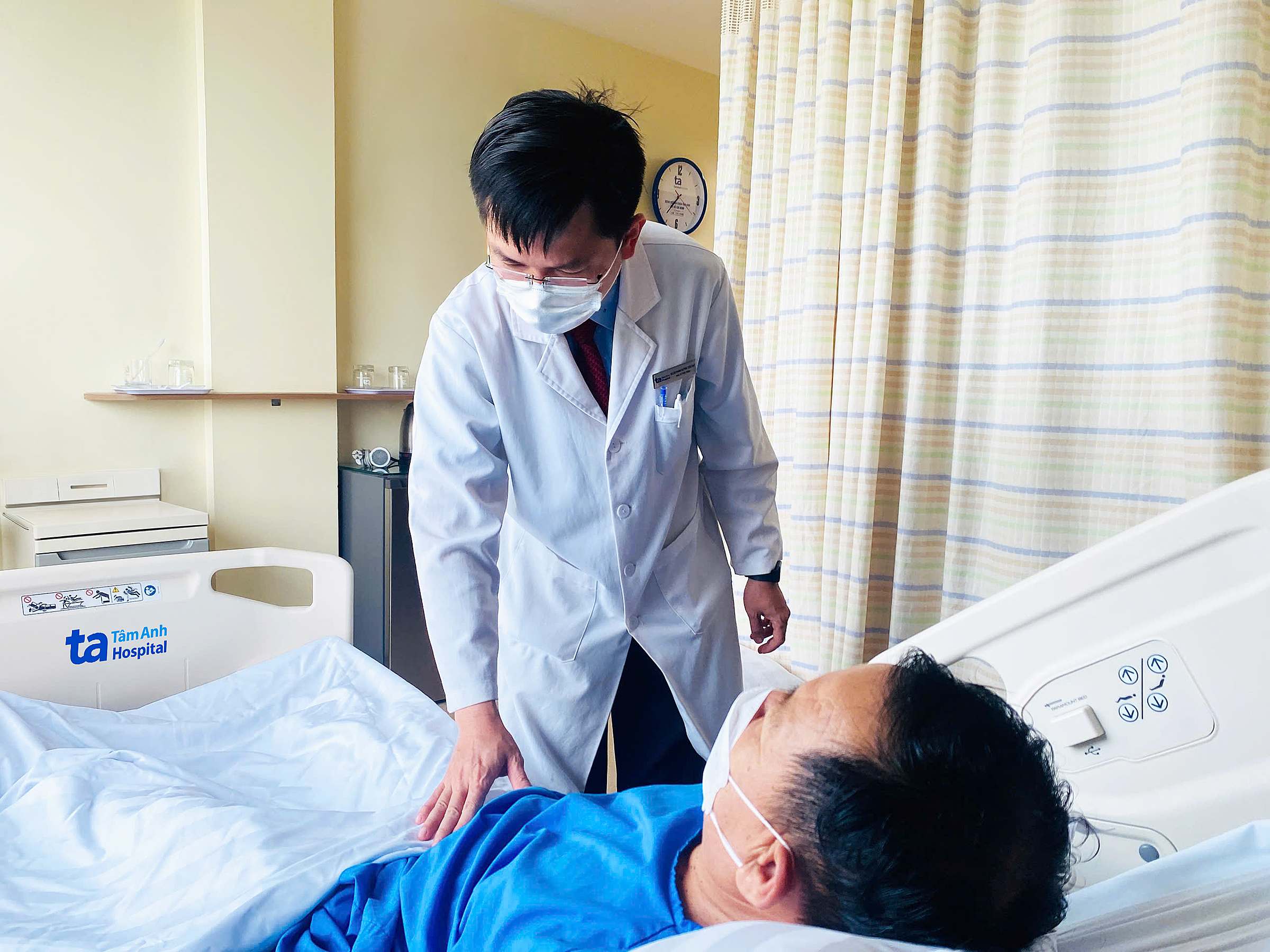A CT scan at Tam Anh General Hospital in TP HCM revealed a 6 cm tumor in Hien's left kidney, located in the middle third of the organ and extending deep into the renal sinus. Doctors suspected renal cell carcinoma, the most common type of kidney cancer.
 |
The tumor in Hien's left kidney was located in the middle third of the organ. Photo: Tam Anh General Hospital |
The tumor in Hien's left kidney was located in the middle third of the organ. Photo: Tam Anh General Hospital
Dr. Nguyen Tan Cuong, deputy head of the Urology Department at the Urology, Nephrology, and Andrology Center of Tam Anh General Hospital in TP HCM, explained that partial nephrectomy carried the risk of not completely removing the tumor due to its large size and proximity to the renal hilum's blood vessels. This approach also risked damaging internal structures like the renal blood vessels and renal pelvis.
The doctors opted for the safest and most effective treatment: a robot-assisted radical nephrectomy using the Da Vinci Xi surgical system. During the procedure, the surgical team discovered an unusual branching of the renal artery, an enlarged renal vein, and increased vascularization within the tumor, making dissection of the blood vessels at the renal hilum challenging. The robot's arms, able to reach narrow and deep areas, allowed the surgeons to operate with greater flexibility and precision. The renal artery and vein were quickly and safely clamped and cut.
The day after surgery, Hien was recovering well, able to sit up and eat a small amount of porridge. Experiencing minimal pain from the small abdominal incisions, he was discharged two days later.
 |
Dr. Phan Huynh Tien Dat provides post-operative care instructions to Hien before his discharge. Photo: Tam Anh General Hospital |
Dr. Phan Huynh Tien Dat provides post-operative care instructions to Hien before his discharge. Photo: Tam Anh General Hospital
According to Dr. Cuong, renal cell carcinoma accounts for approximately 85% of kidney cancer cases. In its early stages, the disease often presents no symptoms and is typically discovered incidentally through ultrasound or CT scans. This was the case with Hien, who had previously been healthy and exhibited no suspicious symptoms.
By the time symptoms like blood in the urine, flank pain, unexplained fever, or a palpable abdominal mass appear, the cancer has usually progressed, potentially invading surrounding tissues and metastasizing to lymph nodes or other organs.
Dr. Cuong noted that surgical removal of the tumor (partial nephrectomy or tumor resection) is the most effective treatment in the early stages when the tumor is smaller than 5 cm. For tumors larger than 5 cm located deep within the kidney and close to the renal pedicle, as in Hien's case, partial nephrectomy carries a higher risk of leaving behind cancerous cells at the resection margin, bleeding due to damage to major renal blood vessels, and other post-operative complications. Robot-assisted radical nephrectomy is a suitable option to completely eliminate the cancer and reduce the risk of surgical complications.
Individuals who have had a kidney removed, like Hien, must protect their remaining kidney to maintain their health. He needs to adopt a healthy diet, limiting salt and animal protein, incorporating plenty of fruits and vegetables, avoiding alcohol, tobacco, and engaging in regular exercise. Adhering to scheduled health checkups and kidney function tests is crucial for early detection of any abnormalities. He should also avoid self-medicating with over-the-counter or unverified herbal remedies that could harm his kidney.
Ha Thanh
*The patient's name has been changed.
| Readers can submit questions about kidney disease here for doctors to answer. |












